#18 – ELIXIR OF YOUTH
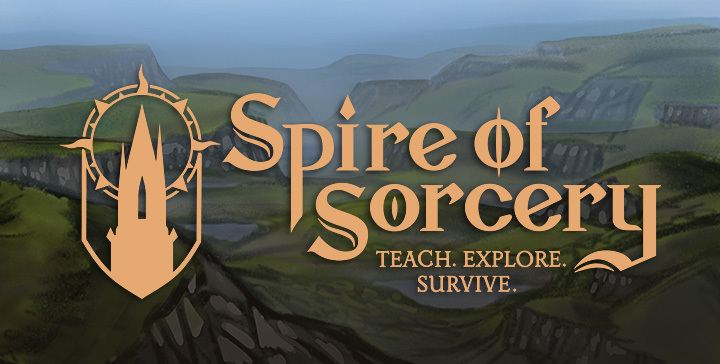
ːsummer_magicː OTHER ISSUES OF THIS BLOG
ːQuestionsː CONSOLIDATED Q&A THREAD
Today, we'll talk about the goal of the main campaign of the game: getting access to the Elixir of Youth.
DEATH FROM OLD AGE
When you start the main campaign in Spire of Sorcery, you have multiple ways of addressing the challenges that the world throws at you:
- building a stronger defense against a possible attack by the Inquisition;
- exploring the distant corners of the world to obtain rare resources;
- increasing the strength of your magic Call to attract more disciples;
…and so on. However, there is one challenge that stands out: your mage's age. Every day the mage gets older, and death from old age is the hard limit that the game sets for the main campaign. You may slow down the decaying health, but you cannot stop the onset of decay - unless you win the main campaign by accessing the elusive Elixir of Youth.
STAYING HEALTHY, STAYING STRONG
Since different players start the campaign with different characters (based on the initial text quest), the basic life expectancy of your mage varies. Just like some mages will have better skills than others, some will also have stronger health stat.
The other thing that affects the longevity of your mage is your decisions on his or her way of life. The following points have a strong effect on how fast your mage ages:
- the sort of food that your mage eats;
- the amount of sleep that your mage gets;
- the frequency of mediation;
- the mood of your mage;
- the regularity of his/her overall schedule.
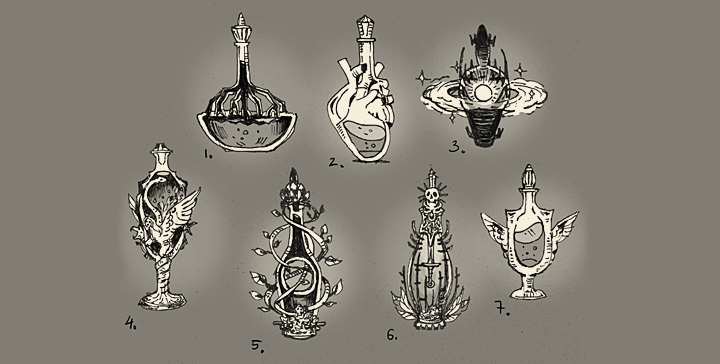
Food
The basic thing than you can eat, is what your disciples can forage from the land: mushrooms, berries, roots and wild fruit. On the next level is meat and fish ("game") that your disciples can hunt.
Then comes the cooking: a basic ration requires resources and basic cooking skills, as well as time to prepare, and is more preferable to what you can forage. A ranger's ration is a ration that can last for a long time - so it's possible to prepare those in advance and store them; or use them during expeditions; but at the same time, this ration is not as good as the basic ration in terms of nutrition.
Finally, there's the special healthy ration that needs an advanced cooking skill to prepare: while it cannot be kept for a long time, it provides all the nutrition that a character needs. Eating these healthy rations will delay the decay of your mage's health.
Sleep
Every day, your mage gets tired and needs to sleep to get back to shape. There is a physical limit on how long your mage can go without sleep - after certain time, any character just drops down from exhaustion and falls asleep no matter what you tell them to do; there is a similar limit also on how long a character may stay asleep - if you pushed character for all-nighters the whole week, you won't be able to just tell them to go and sleep for the next 60 hours; rather, characters have natural limits as to when they wake up.
Meditation
There are several meditation techniques, all of which can be learned, that help your mage to regain stamina and improve body/mind balance. Regular meditation helps to delay the disintegration of your mage's health stat.
Mood
Stress and unsatisfied desires negatively affect your mage's health, while keeping him/her happy and providing the small pleasures that they desire has a positive effect.
Regular schedule
Every person in the Spire reacts well to having a regular schedule. Eating three times a day, sleeping in the night and meditating or exercising at specific times keeps people in a good shape. Waking characters up in the middle of the night, skipping meals to address urgent issues and so on, has a negative effect on the current health parameter.
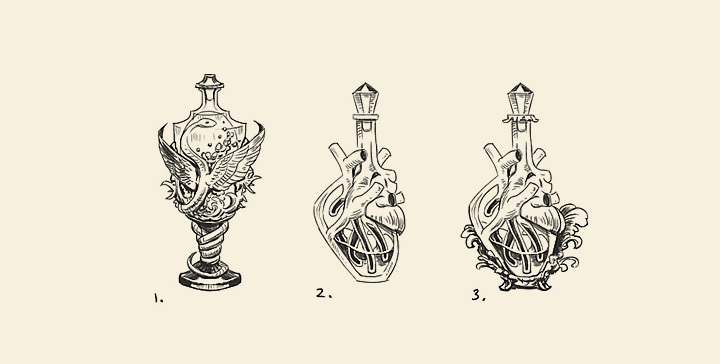
HOW MUCH TIME IS LEFT?
Your mage doesn't really have any special "Life Clock" ticking away in his/her hall, that would show something like "You have 352 days to live". As the mage gets older, he/she is more likely to succumb to illnesses; you may approximate the expected lifetime that remains - especially if you've already played the game and developed an "intuition" for your mage's current state - but this is nothing more than a guess, since so many factors, internal and external, affect the outcome.
Technically speaking, every character in the game has a "current health" and "overall health (constitution)" parameters. With disciples, the value of "current health" is automatically restored with time. You get tired, you fall sick, you get injured… but there's always the cure that can set things right, and by default your characters will restore their current health with time. With the mage, though, this parameter is not restored on its own, and once "current health" reaches zero, the overall global health stat loses another point.
As you may remember, character stats in Spire of Sorcery are measured from 1 to 20. On this scale, 10 is the average value corresponding to a regular healthy person, 20 means "super-human" and 0 means "dead". Since we don't show specific numbers in the game, but rather an overall characterization - "strong", "frail", "very frail" - you will have a general idea of where your mage is, on this global scale, and you'll need to figure the rest based on your overall situation.
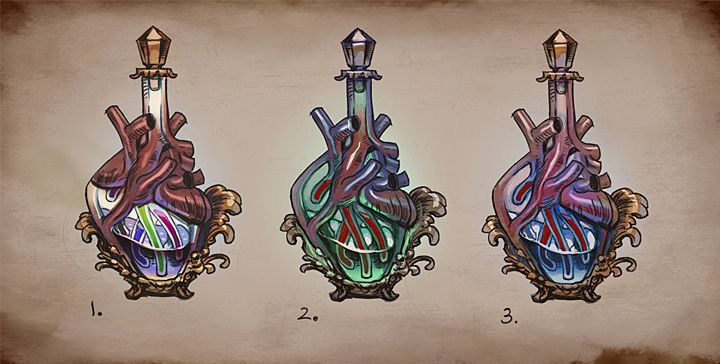
THE ELIXIR OF YOUTH AND THE END OF THE MAIN CAMPAIGN
The Elixir of Youth should not be mistaken for the Elixir of Immortality. While there are known references to the Elixir of Youth as something that existed during the Age of Mages, the Elixir of Immortality is more a myth than a reality - in theory, it could be possible; but in practice, no one ever heard of, or read about, such a thing.
In the Age of Mages, the Elixir of Youth was used by powerful mages to restore their health and extend their lives. There is no single recipe for this elixir, as mages kept their discoveries private - some formulas resulted in another 100 years of life; some resulted in just 20; and some formulas were so risky that the mage who consumed them, may never wake up at all.
To win the main campaign of Spire of Sorcery, you need to, first, access, and, second, use the Elixir of Youth. It is not enough to find it somewhere - as it may get stolen on the way to the Spire. It is also not enough to produce it, and store in the Treasury - as you may end up being unable to consume it due to special requirements.
Important: once consumed, the Elixir needs years of undisturbed rest to take effect. Thus any mage that walks that path needs to prepare for the occasion by constructing a special chamber, where he/she - and only a few select disciples - may remain safe from the world outside for as many years as the elixir requires, while the other disciples are sent out into the world on their own, and the Spire itself is destroyed in order to hide the resting place.
ACCESSING THE ELIXIR
There are two ways of getting your hands on the Elixir: finding it; and producing it.
In order to find the Elixir, you'll need an extremely advanced skill of Astrology, which may reveal the location of one of the bottles with the Elixir that remain from the Age of Mages; or a success in exploring the world, which may allow your parties to reach such remote places and uncover such information that would yield the secret knowledge.
In order to produce the Elixir, you'll need an extremely advanced skill of Alchemy - as well as a large number of rare ingredients. Like with any other potion, your mage's personal formula of the Elixir will be the same form one campaign to another - but as the properties of different world items change, so with every campaign you will be looking for a different set of ingredients.
Once you find - or produce - the Elixir, and prepare to consume it, you will enter the final part of the game: choosing the disciples who will be sent away and choosing the disciples who will remain with you in the sarcophagus. And here we'd like to reveal a special feature of the Iron Man mode: the disciples whom you send away at the end of the campaign, are able to cross the parallel universes, and come to the Spires of other players that are just starting their own campaigns in the Iron Man mode!
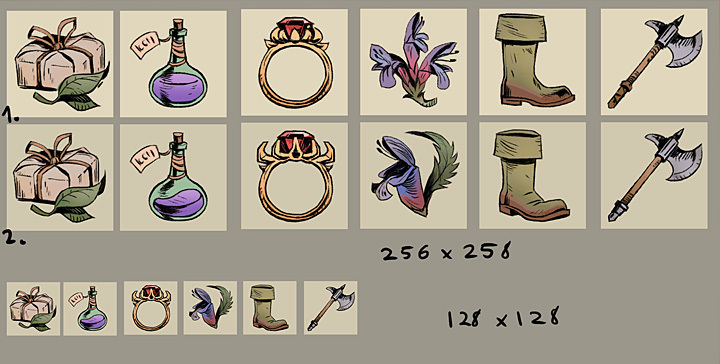
With this, we end this week's dev blog, and as always, thank you for your interest in the game! Please join us on Discord if you would like to participate in the weekly Q&A sessions with our game designer, as well as to see work-in-progress materials that we regularly share there!
---

ːsummer_magicː Official Discord server
ːsummer_magicː Twitter (game updates)
ːsummer_magicː Facebook (game updates)

ːmaliceː Official Discord server
ːmaliceː Twitter (game updates)
ːmaliceː Facebook (game updates)
ːmusicː Original Soundtrack on Spotify

ːnotebookː Twitter (studio news)
ːnotebookː Facebook (studio news)
ːhypnoheartː "Behind the scenes" Instagram
ːfireappleː YouTube






 Lay of the land, Rund.
Lay of the land, Rund. The Legions of Nesturs the Wise carried the flag that depicted magically enhanced human soldiers as its main force, ready to strike the enemy at once.
The Legions of Nesturs the Wise carried the flag that depicted magically enhanced human soldiers as its main force, ready to strike the enemy at once. The flag of the Empire is the interpretation of the Legion's original flag: now the hand is open, offering help to those in need; the triangle represents the knowledge of the state, and its stability; and the crown shines its light on all of Rund, until there are no more dark corners left in the world.
The flag of the Empire is the interpretation of the Legion's original flag: now the hand is open, offering help to those in need; the triangle represents the knowledge of the state, and its stability; and the crown shines its light on all of Rund, until there are no more dark corners left in the world. While the Inquisition portrays itself as the always-alert, always-present force on the forefront of the fight to keep dangerous magic under control, the reality is often different. The job involves extensive travel, and the majority of the reports about 'wild mages' turn out to be false. Down on the ground, serving in the Inquisition is mostly about routine investigations, and a bit of politics, rather than about actually confronting the real danger. Quite a significant number of people who serve in the Inquisition give much more attention to their own career opportunities, rather than to the main cause of the organization.
While the Inquisition portrays itself as the always-alert, always-present force on the forefront of the fight to keep dangerous magic under control, the reality is often different. The job involves extensive travel, and the majority of the reports about 'wild mages' turn out to be false. Down on the ground, serving in the Inquisition is mostly about routine investigations, and a bit of politics, rather than about actually confronting the real danger. Quite a significant number of people who serve in the Inquisition give much more attention to their own career opportunities, rather than to the main cause of the organization.
 Region: Ancient Forests.
Region: Ancient Forests. Region: Rusted Forest.
Region: Rusted Forest. Region: Caves.
Region: Caves. Regoin: Swamps.
Regoin: Swamps.
 Illustration 1: Tasljuk.
Illustration 1: Tasljuk. Illustration 2: Death Flower.
Illustration 2: Death Flower. Illustration 3: Forest Cat.
Illustration 3: Forest Cat. Illustration 4: Mermaids.
Illustration 4: Mermaids. Illustration 5: Creepers.
Illustration 5: Creepers. Illustration 6: Weavers.
Illustration 6: Weavers.